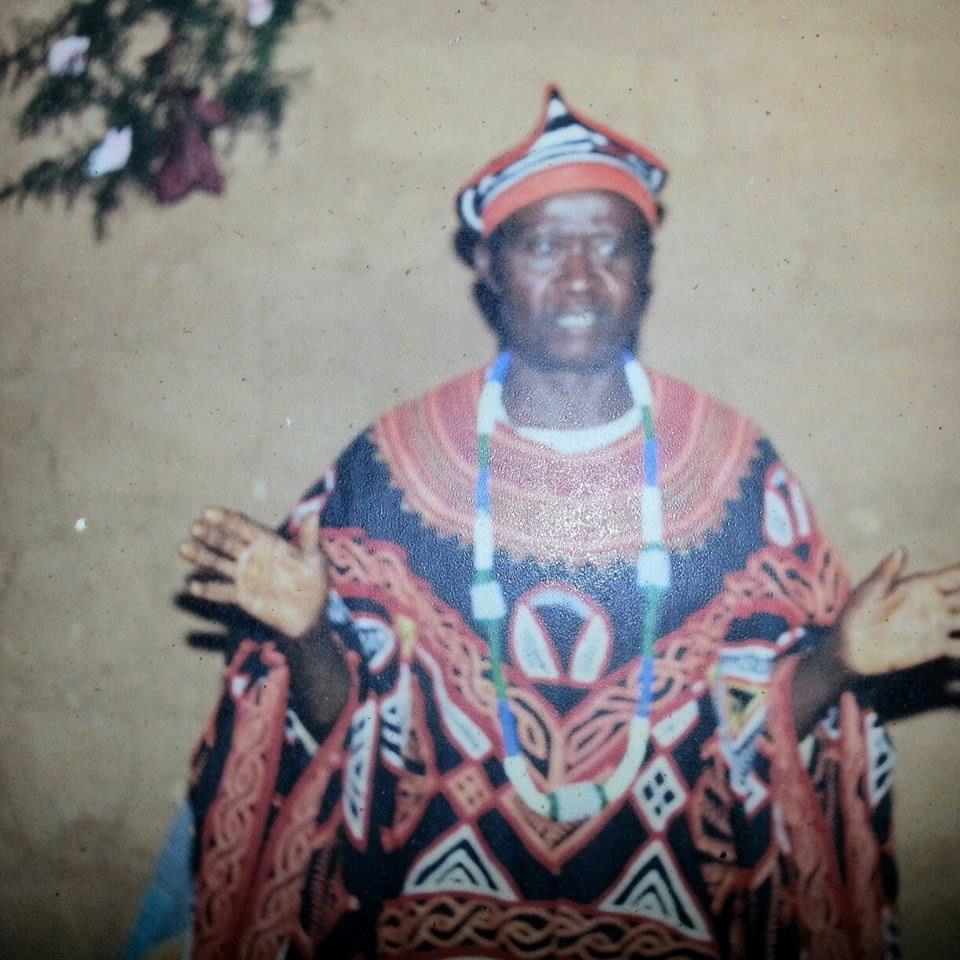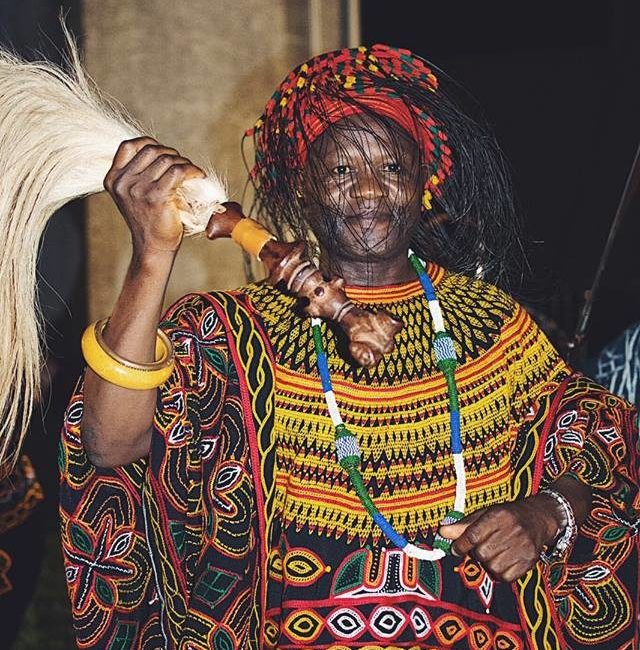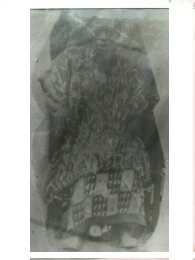The Dynasty of M'muock



INTRODUCTION
M’muock (Fosimondi) dynasty popularly known as the FOZAO DYNASTY is one of the oldest dynasties in the Lebialem Division of the South West Region of Cameroon. Its origin can be traced back to the 16th century following the collapsed of M’muock under Forzenkeang at Feumme-M’muock and the migration of the M’muock people (M’muock (Fosimondi), M’muockbie, M’muock Leleng and M’muock Leteh) to the present M’muock land.
Historically, Forzenkeang had settled in the north of Dschang after Bafou in the the 16th century and founded M’muock. The area is on the Northwest of Bafou, just after the famous stream called Nchi Tiayim, below the famous hill called Leko-o Feumme-M’muock but today occupy by both Bafou and Fongo-Tongo and known as Feumme-M’muock. He settled there with his people and was very powerful. During their settlement in this area, they were often harassed by their neighbors especially the Bafou in what was known as Nzong Tuh (night raids) that was later replaced by Fou’ka’a (secret army). Despite these night and secret frequent attacks for subjugation, they fought back successfully and heroically. This earned them the name “M’muock” from their attackers meaning “Fire or powerful people” signifying their ability to resist stiffly and they became known as such till date. Opinions differ as to why M’muock people emigrated from Feumme–M’muock but the most accepted story among the M’muock people holds that Forzenkeang their leader at that epoch became a “tyrant” after his authority became incontestable both internally and by foreigners. His tyrannical behavior let him to commit murder, which was a taboo. The story goes thus, Forzenkeang hated people with epilepsy. One fateful day when his subjects had gone to the farms, one of his wives had an epileptic attack. He killed and buried her and then reported the matter to his subjects when they returned. This enraged the subjects who could not more bear such tyrannical behavior and a squabble broke out between him and them. As punishment for killing a human being, the notables (Bekem) and other subjects arrested and tied him on a tree at the entrance of his palace (Azea-Meh). Nkemazao (Azaolefack), Nkemazeh (Azembie), Nkemassong (Mekantap) and Nkemtang (Tangmo), together with a significant faction of Forzenkeang’s subjects then decided to abandon him believing the land has been cursed. They then migrated to the present M’muock land. The remaining family of Forzenkeang scattered after Nkemezao, Nkemeze, Nkemassong and Nkemtang left. Part went to Bafou and the other to Bangang while another followed to Leteh where some of his descendants took up his title, this time as Sub Chief (Befountia-h). This marked the end of Forzenkeang leadership as the paramount ruler of the M’muock people as well as the fall of M’muock at Feumme-M’muock.
1st KING, HM FOZAO
(Around 1600s - About 1755)

After the collapsed of M’muock under Forzenkeang at Feumme-M’muock, Nkemezao (Azao-lefack) emigrated from there and founded his own Kingdom known as M’muock (Fosimondi) Kingdom and became the first paramount ruler of the Kingdom. Nkemezao and his subjects settled above the present – day palace of Fotang (So-h) and extended Eastward towards Apagepu-h, Meleta-h and Senchih. Based on this historical fact, their brothers of M’muock Leteh call them “Pah So-h” till date “meaning the people of So-h” because they settled there at first when they left Feumme-M’muock. While at So-h, Nkemezao upgraded himself to become the autonomous leader of his subjects from Feumme-M’muock and became “Fozao”. He left Feumme-M’muock with a notable called Nwundie (he later became Nkem Chiafie and subsequently upgraded to Fouchia with his quarter as M’veh). Nkem Kang later followed them and was also upgraded to Founchengella-h. Nkem Nkang came alongside Njioze-h who is today Fozenong of Apu-h and Nkemetsah of Chienglecute.
As Nkemezao upgraded his name to Fozao, the name Nkemezao was handed to another person who became the first Nkem to be crowned by Fozao himself and he is today consider in M’muock (Fosimondi) as the “First Nkem-alah” of the Kingdom.
Fozao grew old and traveled home to rest around 1755 and was succeeded by his son Ntseindie.
2nd King, FOZAO NTSEINDIE
(About 1755 – About 1800)

As Fozao returned home to rest, this marked the beginning of another epoch in the growth and stabilization of M’muock (Fosimondi) Kingdom. He was succeeded by his son Ntseindie after a long journey of creating M’muock (Fosimondi) Kingdom. Ntseindie took over as “Fozao Ntseindie” and became the 2nd ruler in the Fozao dynasty of M’muock (Fosimondi) Kingdom.
He too grew old and traveled to meet his ancestors around 1800 but by time of his death, M’muock (Fosimondi) Kingdom has stabilized a lot and grew in number.
3rd King, HM FOZAO ZEMENGOU
(About 1800 to 1870)

When Fozao Ntseindie returned home, he was succeeded by his son around 1800. Fozao Zemengou ruled for about 70 years and died at the age of about 120 years. This earned him the nickname of “Fojhiale-ntondie” because whenever he needed fresh air, he was taken outside where he had to sit and lean on one of the pillars of the palace halls called lemu, for support given that he was very old and weak.
During his leadership, M’muock (Fosimondi) Kingdom excel and expanded much and he died around 1870.
4th King, HM FOZAO NKEANGLEFACK
(About 1870 to About 1914)

When Fozao Zemengou finally traveled to meet his ancestors in about 1870, his son Nkeanglefack succeeded him and became Fozao Nkeanglefack.
During his leadership, M’muock (Fosimondi) people also migrated to various places. They also move from So-h to a more fertile virgin forest which up to today is referred to as Atut Lepei (meaning river farm) by their brothers of M’muock Leteh but Mbamuock or Chilembah by the people of M’muock (Fosimondi) themselves.
The reign of HM Fozao Nkeanglefack was the most violent period in the history of M’muock (Fosimondi) Kingdom. His reign coincided with the German colonial period. The Germans had established plantations in the Coastal regions of Victoria and kumba and were opening up roads to reach the hinterlands. They needed free labour and so came up to M’muock by 1903. At first, Fozao Nkeanglefack never resisted giving villagers as laborers to the Germans. However, from the past experiences gotten from the non-return of former conscripts, he objected and resisted just like the other kings in the area like Fontem Asonganyi of Lebang. His resistance of giving more men to the Germans angered them and in return, the German colonial administration responded by sending a group of men with rifles arm that came and arrested him along side two of his wives and a servant up to their station in Banyo (Penyong), North of Cameroon, on exile. His subjects attempted to resist but were scared away with the guns the Germans carried.
Undocumented and local sources hold that he finally died in exile.
5th King, HM FOZAO FIETSO
(About 1914 - 1958)

As the first World War (WWW 1) break out, Germans had to disfocus their attention on plantations in the Coastal regions to fight the war and calmness return to M’muock. This reduces force labor and their activities in Kamerun. Despite the exile of Fozao Nkeanglefack, the villagers remains optimistic of his return one day. After waiting for long of his return but rather got the news that he was no more alive, his son Fietso who had attended a basic education under Germans in Dschang was crowned to succeed him in about 1914 and became HM Fozao Fietso. With his basic education, he was a no-nonsense ruler ready to defend his rights and preserve the dignity of his kingdom. He fought for the establishment of the customary court in Melekeng to shorten distance because such court sessions normally held in Fontem (Azi) under the Native Authority (NA) instituted by the British colonial administration and at that time, the Fontem Asonganyi the king of Lebang Kingdom was the main judge. Whenever Fontem Asonganyi entered the court session, all the other court jurists (Fozao Fietso inclusive) had to rise (stand up) to welcome him. On one of such occasions, he sat down because he didn’t see any reason for standing to honor a fellow king of the same status like himself. This opened the eyes of many other kings present and the practice came to an end.
HM Fozao Fietso also loved development. In the early 1940s, through his initiative and that of Mofor Temoh Tebekoa (who became Forlemu in 1952) they requested for the opening of a vernacular school in his palace by the Basel Mission Authority (BMA). This school helped to trained the first elite of the village notably Azemenkieh Johnson, William Wezeke Fosimondi, Alexander Nzota Fosimondi (who later became his successor), Francis Nzebelai, Peter Tendiefie, James Fosimondi, Ben Ndieze, and Paul Agbor and subsequently Mofor Ntsobeno Forlemu, Zeshung Abel NJongwo, etc.
He ended his journey successfully after the village has gotten the foundation of education with the establishment of Presbyterian School Fosimondi (PS-Fosimondi) in 1955. He passed unto glory in 1958 after great achievements.
6th King, HM FOZAO A. NZOTA
(1958 – 2004)

In 1958, Fozao Fietso traveled to meet the ancestors and his son Alexander Nzota Fosimondi succeeded him and became HM Fozao A. Nzota I of M’muock (Fosimondi) Kingdom. He was the 6th King of M’muock (Fosimondi) Kingdom and the builder of the modern M’muock (Fosimondi) Kingdom. In the light of his father HM Fozao Fietso, he continued to encourage education. Most elite of M’muock (Fosimondi) community today owe a special appreciation to him. After studying in Nigeria, he returned to the kingdom in 1958 to take over leadership. At this time, Presbyterian School Fosimondi (PS-Fosimondi) has been established since 1955 but parents needed sensitization to release children for education. Most parents were not willing to do so because their children were forced into trading or farming activities and also because of Christianity clashes with tradition but through his efforts in the 1960s and 1970s and that of others like late Pa Mofor Ntsobeno Forlemu, many parents saw the need to educate their children. Through their combined efforts, M’muock (Fosimondi) started having its own pioneer student teachers notably Mr Asaah Jacob, Nkambeng David, Momenyi Johnas, Mofor Johnson, Mongwo George, Jacob Tafie, Thomas Njofie, etc. These were later followed by others like Mr. Azenkhang Dickson Forlemu and Mr. Tengim James.
He loved education so much that he lobbied for the creation of Government Primary School Mbelenka – (GS-Mbelenka), Government Primary School – Apang (GS-Apang), Government Primary School – Awut (GS – Awut), Government High School M’muock (GHS – M’muock).
Under his efforts and support, the first motorable road was started in 1964 from Mbelenka to the upper entrance of Mbuobeka. It was extended right to Molah Palace in 1972 and another one constructed by hand from Atra – M’muockmbei to Molah in 1970/1971. It was later deviated from Ajhiangem to Mbuobeka in 1994. Mbelenka was linked to Awut through manual digging and, thanks to the coming up of MUDECA in 1985, Awut was linked to Chilembah and Mbelenka to Senchie through Tenkeuleh. Every quarter put in extra effort to link itself to others parts of the village by opening up its own roads. By this, the village became interconnected.
He passed unto glory after mighty development of the village in 2004.
7th King, HM FOZAO A. AFOU
(2004 – Present)

As his HM Fozao A. Nzota happily returned home full of achievements and held in very high esteem by the M’muock (Fosimondi) and the Lebialem people in general, his son Adolf Afou Fozao succeeded him in 2004 as HM FOZAO A. AFOU of M’muock (Fosimondi) Kingdom being the 7th paramount ruler of the M’muock (Fosimondi) people.
Since his enthronement, he has succeeded in many areas including the electrification of almost the entire village, the creation of Government Bilingual Secondary School Mbelenka (GBSS -MBELENKA), the opening of many road networks, the opening of a sub divisional hospital. He has equally succeeded to unite M’muock people both home and abroad. Maintain peace with neighboring kingdom.
SOURCES
- Mr Kwencha Aloys (2018), Discovering the people of M’muock (Fosimondi)
- Benoh M’muock Magazine, 2008 Edition
- MUNED Interview of HRH Fozeshung Samson (Yaounde, 2014)
- MUNED Facebook Live Interview of Ndi Nkemezao Jonas (Buea, 2018)
- MUNED Facebook Live Interview of HRH FOFIETSO by (Buea, 2018)
- MUNED Facebook Live Interview of Pa Nkweteyim Absoboh (Buea, 2018)
@MUNED2018